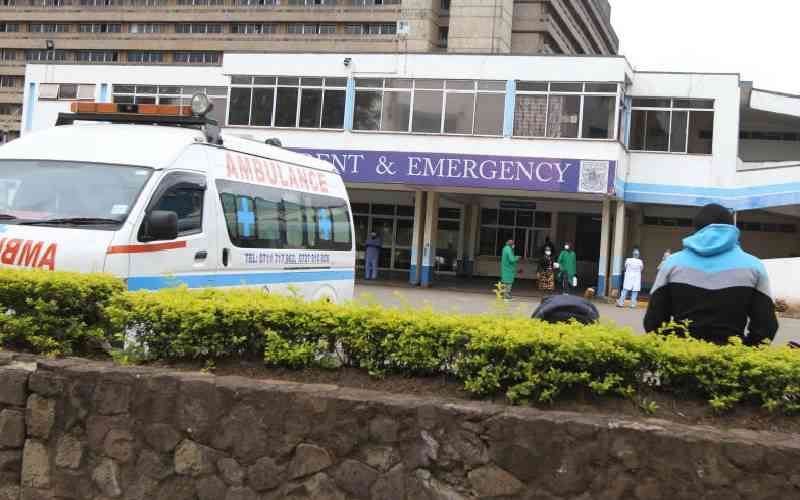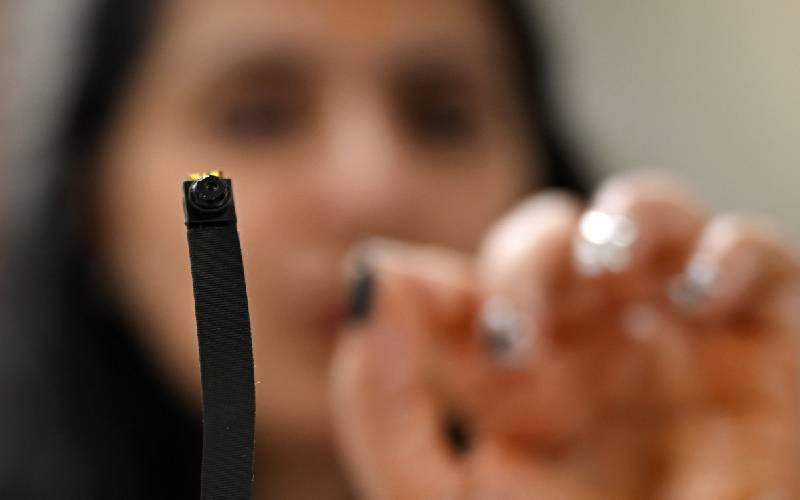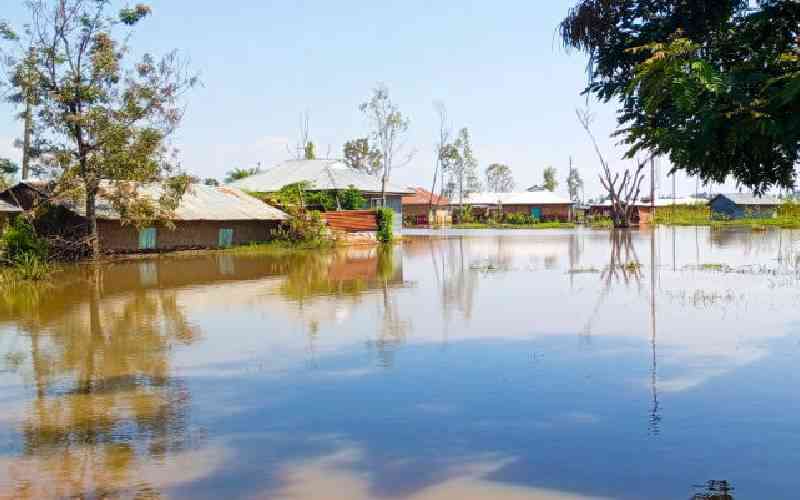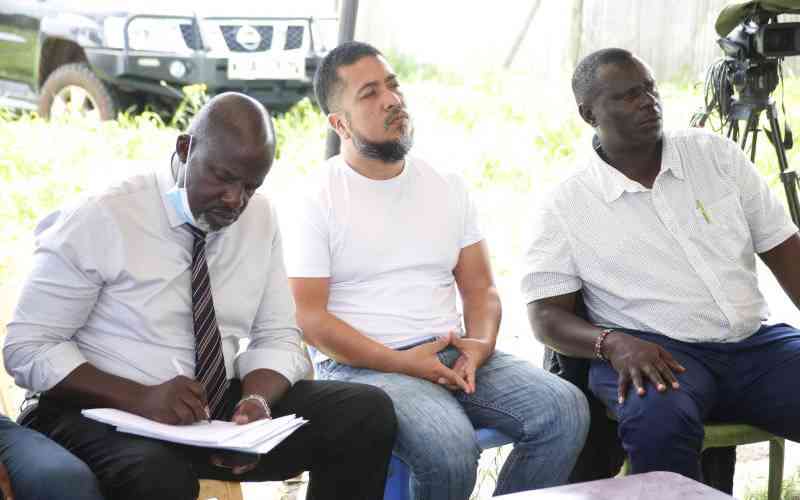By Kenneth Kwama
Abednego Obilo is a retired civil servant who runs a wholesale shop on the fringes of Siaya town. At 68 and still going about his business strong and healthy, he considered himself lucky until he started experiencing frequent urge to urinate.
At first, he dismissed it as a ‘passing cloud’ but later got concerned when the problem persisted. He contacted a doctor — a urologist he once met in Nairobi at a conference and arranged for an appointment.
The doctor recommended a test called prostate-specific antigen (PSA) test. PSA is a protein produced by cells of the prostate (a small gland found in males that produces sperms). The PSA test measures the level of PSA in the blood.
In general, a PSA level less than 4ng/ml is considered normal while anything greater than 10ng/ml is considered high.
Before the test results came, the urologist explained to Obilo that there can be different reasons for an elevated PSA level, including prostate cancer, benign prostate enlargement, inflammation, infection, age, and even race.
He hoped the test would confirm any of the other causes, but not cancer but further tests indicated prostate cancer. The doctor recommended radiotherapy and a cocktail of drugs, but he found the initial treatment too exorbitant.
He enquired the cost in four of Kenya’s top hospitals and realised that the total cost for the initial phase of treatment would cost him more than Sh500,000.
Traditional treatments
"Just when I was about to give up, my nephew who stays in Eldoret called and told me that one of her friends had taken her father for throat cancer treatment in India and that the costs were affordable," says a smiling Obilo.
India provides world-class medical facilities with hospitals and specialised multi specialty health centres that provide expertise in various fields including cancer treatment, cosmetic surgery and heart surgeries.
It is also renowned for coronary bypass, valve replacements, knee replacements, eye surgeries and many forms of Indian traditional treatments. Overall, treatments offered cover several aspects of medicine combining modern treatments with traditional experience.
According to Obilo, he contacted the man who had been getting throat cancer treatment in India and was promptly linked up with a hospital in Mumbai.
"The specialist I was assigned contacted my local doctor and discussed my situation. We emailed the test results and two weeks later, I was in Mumbai to start my treatment," says Obilo.
That was four years ago. When Obilo who had been given less than two years to live by fear mongers after his diagnosis in 2008 went for another round of tests three months ago, his PSA levels that stood at 1100ng/ml in 2008 had reduced to less than three per millilitre of blood. Further tests revealed that growth of the cancerous cells had stalled.
Stay informed. Subscribe to our newsletter
"Prostate cancer, unlike many other cancers, often grows slowly, and does not always pose a significant health risk. The only scary thing about this condition is the name cancer. People think it means death, but with treatment it can be contained and one is able to live normally for several years thereafter," says Obilo’s doctor.
The urologist is a consultant in top hospitals in the country, including Nairobi Hospital, Kenyatta Hospital and MP Shah.
He however admits that it is much cheaper treating such diseases in India because it has several specialists, pharmaceuticals and special clinics where people can access world-class treatment at much cheaper prices than those charged in technologically advanced countries like the US and UK.
Along with its other traditional appeals, India has become a major destination for low-cost medical care. Currently, millions of people across the globe visit India every year to get treated and enjoy recuperative holidays there.
"People from different walks of life cutting across the entire span of the globe come to India to have their treatments done with peace of mind," says Dr Mahindra Shah, an Indian heart specialist who works across different hospitals in the country.
"Indian medical standards match up to the highly prescribed international standards. The lower costs are due to favourable currency conversion rates and lower costs of operating in India," says Dr Shah.
Elective procedure
The potential cost-savings for medical tourists are huge and as a result is one of the most important factors in seeking treatment in India. Generally, the cost per individual varies depending on their needs and requirements.
Usually, an elective procedure such as a knee replacement would cost on average of $30,000 in the US whereas getting that same procedure done using similar quality parts in India costs 40 – 60 per cent less than the cost in the US, including hospital stay. The cost also covers the actual procedure and physicians costs and transportation to and from India.
The costs compared to UK are similarly lower by about 40 – 60 per cent. This is mainly possible because of favourable currency exchange rates and the fact that the country has a huge number of specialist doctors and equipments.
The services are spread across major Indian cities like Delhi, Mumbai and Bangalore. The fact that these towns are served by international airports makes direct international flights possible, meaning patients in need of specialised care can fly directly from their countries to India.
Those who don’t know how to find their way around can rely on companies like Travel India Company- a reputed international tour operator based in Bangalore, India. Such companies, most of which are low-cost and reliable are recognised by various hospitals and health care providers across India and usually help to arrange for treatment and accommodation for patients and their families.
According to a report by the Delhi-based RNCOS, which specialises in Industry intelligence and creative solutions for contemporary business segments, India’s share in the global medical tourism industry will reach around three per cent by the end of 2013.
Cost savings
The December 2010 report titled "Booming Medical Tourism in India" – says that the industry should generate revenues of around $3 billion by 2013. "The Indian medical tourism industry is currently in its early growth stage," says RNCOS chief executive Shushmul Maheshwari.
If India continues to offer high quality health care at one-tenth the cost in the US then these things will not make an impact. India has the highest potential in medical tourism in the world. Factors such as low cost, scale and range of treatments differentiate it from other medical tourism destinations," he says.
According to Obilo, Kenyans who have been driven out of the country by exorbitant medical costs are flocking to India to seek treatment because it is ‘far much more affordable.’
"It’s very common to find Kenyans who have rented apartments near hospitals in Indian towns like Delhi. The option of renting appeals more to those who are staying for extended periods of treatment like six months because it is much cheaper than staying in a hotel," says Obilo.
Growth in India’s medical tourism market is expected to be a boon for several associated industries, including the hospital industry, medical equipment industry, and pharmaceuticals.
Studies show that compound annual growth rates (CAGR) in revenue in 2011-13 will be 26 per cent. In terms of medical tourists, the number would touch 1.3 million by 2013 at a CAGR of 19 per cent.
"India has been ranked among the top five destinations for medical tourism," says Rana Kapoor, founder, managing director and CEO of Yes Bank, which has recently done a study on health and wellness tourism in India along with apex chamber of commerce.
Medical visa
The ranking by Nuwire Investors, an online source for news on alternative investments, puts Panama on top, followed by Brazil, Malaysia and Costa Rica.
Western medical tourists are particularly drawn to India for the high-level English in the medical profession and to avoid waiting lists in home countries.
Savings are incredibly attractive, with most procedures often amounting to just 1/5 of the costs in Western nations.
Visas are required to enter India and must be organised prior to travel. India offers a one-year extendable medical visa for those getting treatment at government-recognised facilities.
Tourist visas for most countries are for six months, while US citizens can obtain five- and ten-year tourist visas. English is the norm in the medical field and it is also widespread in major cities.
Hindi is the official language, and English is a secondary official language of the country. Living costs are extremely low for travellers from nations such as Japan, Germany, the UK and the US.
 The Standard Group Plc is a
multi-media organization with investments in media platforms spanning newspaper
print operations, television, radio broadcasting, digital and online services. The
Standard Group is recognized as a leading multi-media house in Kenya with a key
influence in matters of national and international interest.
The Standard Group Plc is a
multi-media organization with investments in media platforms spanning newspaper
print operations, television, radio broadcasting, digital and online services. The
Standard Group is recognized as a leading multi-media house in Kenya with a key
influence in matters of national and international interest.
 The Standard Group Plc is a
multi-media organization with investments in media platforms spanning newspaper
print operations, television, radio broadcasting, digital and online services. The
Standard Group is recognized as a leading multi-media house in Kenya with a key
influence in matters of national and international interest.
The Standard Group Plc is a
multi-media organization with investments in media platforms spanning newspaper
print operations, television, radio broadcasting, digital and online services. The
Standard Group is recognized as a leading multi-media house in Kenya with a key
influence in matters of national and international interest.








